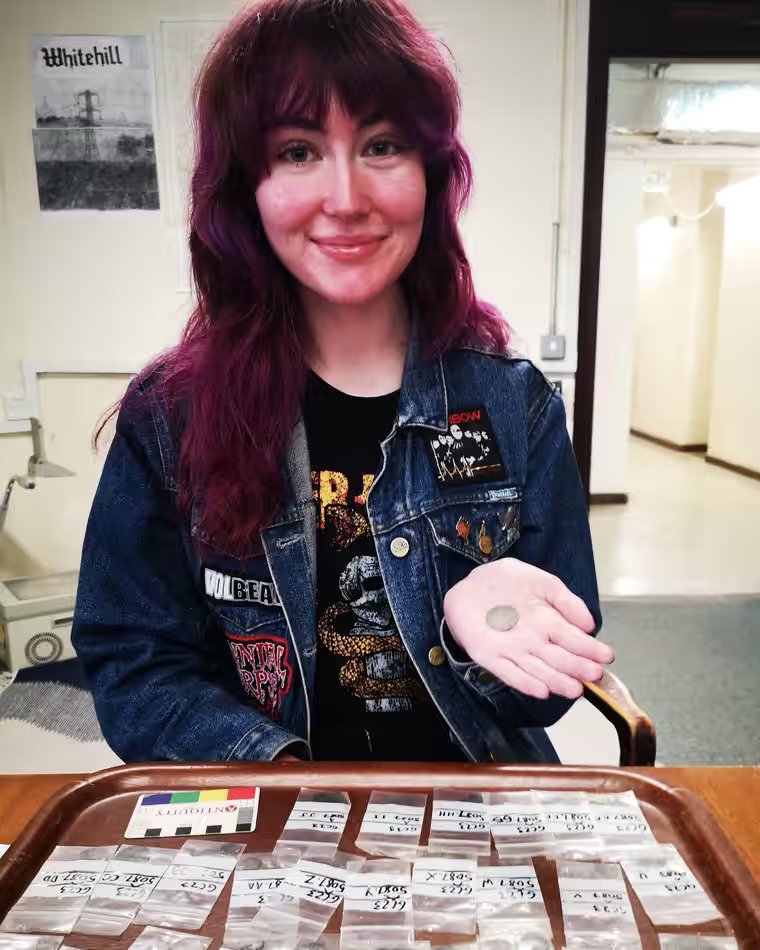Title: 330-year-old coin hoard hidden in Scottish fireplace may have been buried moments before MacDonald clan massacre

A hoard of coins linked to a Highland chief – which may have been stashed away as he tried in vain to escape the Glen Coe massacre – has been discovered underneath a fireplace.
The 17th-century collection of 36 coins included international currency, and was hidden beneath the remains of a grand stone fireplace at a site believed to have been a hunting lodge or feasting hall.
The site was associated with Alasdair Ruadh “Maclain” MacDonald of Glen Coe, the clan chief from 1646-92, who, along with his family, was a victim of the massacre that followed the first Jacobite rising.
The MacDonalds took part in the 1689 effort to restore the Catholic James II of England and Ireland and VII of Scotland, after his deposition by his Anglican daughter Mary and her husband, William of Orange.
As government forces quelled the rebellion and sought to enforce peace terms, the clan was targeted – ostensibly for being among those to have failed to take an oath of allegiance to the Protestant monarchs in time. An estimated 82 clan members were killed on 13 February 1692; including Maclain and his wife.
Artefacts discovered at “the summerhouse of Maclain”, included European pottery, and silver and bronze coins, dating from the 1500s to 1680s, during a University of Glasgow dig in August.
Lucy Ankers, the archaeology student who found the hoard, said: “As a first experience of a dig, Glencoe was amazing. I wasn’t expecting such an exciting find as one of my firsts. I don’t think I will ever beat the feeling of seeing the coins peeking out of the dirt in the pot.”
Currency from the reigns of Elizabeth I, James VI and I, Charles I, the Cromwellian Commonwealth, and Charles II – as well as France and the Spanish Netherlands and the Papal States was also found.
Historians believe whoever buried the coins may have been killed during the massacre, since they did not return for them.

Other finds from the structure included musket and fowling shot, a gun flint and a powder measure, as well as pottery from England, Germany and the Netherlands and the remains of a grand slab floor.
In January 1692, after the rising and the failure of the clan to pay homage, approximately 120 men from the Earl of Argyll’s Regiment of Foot arrived in Glencoe from Invergarry, led by Robert Campbell of Glenlyon.
Historians speculated the coins may have been buried two weeks later – on the morning of the massacre. Survivors ran up a side glen during a blizzard, and may have encountered the property.
Dr Michael Given, the co-director of the University of Glasgow’s archaeological project in Glencoe, said: “These exciting finds give us a rare glimpse of a single, dramatic event. Here’s what seems an ordinary rural house, but it has a grand fireplace, impressive floor slabs, and exotic pottery imported from the Netherlands and Germany.
“What’s really exciting is that these coins are no later than the 1680s, so were they buried in a rush as the massacre started first thing in the morning of 13 February 1692? We know some of the survivors ran through the blizzard and escaped up the side glens, including this one. Were these coins witnesses to this dramatic story? It’s a real privilege to hold in our hands these objects that were so much part of people’s lives.”
Edward Stewart, the excavations director, said: “These excavations have allowed us to better understand how landscapes such as Glencoe might have been occupied and managed through the early modern period. The excavation of Maclain’s summerhouse allows us to better understand the importance of these uplands to local elites.”




